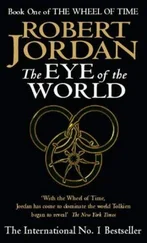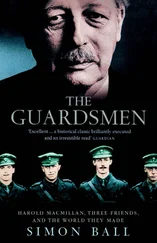1 ...6 7 8 10 11 12 ...36 When they were climbing a part of the interior that resembled the Alps, the weather suddenly turned cold, with snow and icy winds. They were too far from the ship to make it back before nightfall and two of Banks’s black servants, George Dorlton and Thomas Richmond, having drunk too much, literally froze to death.
Banks continued to collect but stayed closer to the ship. On 21 January, the Endeavour left its anchorage and headed for Cape Horn where the ship left the Atlantic and entered the Pacific Ocean. The botanic haul was small but with about a hundred specimens, it was respectable nevertheless.
For the next two months and more, Cook took a northwest course, making straight for Tahiti and for the Endeavour ’s planned anchorage in Matavai Bay, which they reached on 13 April, well in time for the rendezvous with Venus’s track across the sun, and strictly within the instructions laid down by the Admiralty.
How much anyone on the ship knew about Tahiti is unclear. Not long after Wallis’s arrival in London from the Pacific, some London newspapers carried reports of the discovery of a ‘large, fertile, and extremely populous’ island. Descriptions of the people were included such as the following: ‘The first day they came along-side with a number of canoes … there were too [sic] divisions, one filled with men, and the other with women; these last endeavoured to engage the attention of our sailors, by exposing their beauties to their view.’[41]
The Endeavour ’s men, including Banks, were mostly young and hungry for experiences, and they were very impressed by the beauties on view. They soon discovered how different Tahitian society was from what they were accustomed to at home. Banks spent as much time learning Tahitian ways, particularly their uninhibited sexual practices – what he called ‘enjoying free liberty in love’ – as he did botanising.[42]
However, shortly after their arrival, Banks suffered yet another tragedy. Alexander Buchan, the landscape artist, died suddenly on 17 April. Banks was devastated in more ways than one as he explained: ‘I sincerely regret him as an ingenious and good young man, but his Loss to me is irretrievable, my airy dreams of entertaining my friends in England with the scenes I am about to see here are vanished. No account of the figures and dresses of men can be satisfactory unless illustrated with figures: had providence spard him a month longer what an advantage would it have been to my undertaking but I must submit.’[43]
The transit observations were made as planned. Banks continued to explore the island accompanied, at various times, by Cook, by John Gore, the third lieutenant, and by William Monkhouse, the ship’s surgeon, who had been with Banks on HMS Niger in Newfoundland and Labrador. On 4 July Banks did something he had never done before but which would become part of his botanical practices: in and around the encampment of what was called Point Venus, Banks planted seeds of watermelons, oranges, lemons, limes and other varieties he had brought with him from Rio de Janeiro and distributed large quantities of the same to the local people.[44]
Banks and Solander crisscrossed the island but on many days they collected little if anything. The botanical haul, at just over three hundred plants, was on the small side and about the same as they had collected in Madeira in a much shorter period of time and at a less opportune time of the year. On the other hand, Banks was particularly impressed by the Tahitian agricultural accomplishments, especially their cultivation of the breadfruit tree, which provided the population with its main source of nourishment.
On 13 July 1769, three months after arriving, Cook and the ship’s company bade farewell to Tahiti. Cook had carried out all but one of his instructions and now he turned to this final one. ‘When this Service is perform’d’, the Admiralty had written, ‘you are to put to Sea without Loss of Time, and carry into execution the Additional Instructions contained in the inclosed Sealed Packet.’[45]
These additional instructions told Cook that he was now to look for Terra Australis Incognita , the southern land mass that Wallis and some of his men thought they had seen in the distance when they were in the area.[46] The Admiralty told Cook that he should first look for land by sailing south to latitude 40 degrees; if nothing was found, then he should turn westward and search again in between latitudes 40 and 35 degrees until he met the eastern side of New Zealand.
Cook did what he was told and found no land mass in the great ocean, until 6 October 1769, after being at sea for almost three months, land was spotted at last. Was this the edge of the sought-after ‘Southern Continent’? Cook decided that the only way to know for certain was to follow the coast and see where it went. He did just that. For almost six months, the Endeavour sailed in and around the coast until, at the end of March, Cook confidently concluded that New Zealand was, in fact, made up of two major islands and, therefore, unrelated to Terra Australis Incognita . There was certainly no southern land mass in this part of the ocean and with that recognition, as Banks put it, came ‘the total demolition of our aerial fabric called continent’.
Banks and Solander botanised whenever they could though the circumstances were not as pleasant as they had been on Tahiti. The Maori people, who had not seen any Europeans since Abel Tasman’s minimal contact with them on South Island in 1642, were variously curious, friendly and outright hostile and warlike. But the plant collection, consisting entirely of plants new to European science, was significant and outnumbered those from the places that the ship had already visited.
Together with his officers, Cook now decided to sail back to England by way of the East Indies and the Cape of Good Hope, because it was too risky at this time of year to go back by Cape Horn.[47] This meant that Cook was hoping to meet the land which Abel Tasman had discovered in 1642, to which he gave the name Van Diemen’s Land, and to follow its coast northward until reaching its northern extremity.[48] Van Diemen’s Land was shown on one of the maps Cook had with him, which had been drawn by Alexander Dalrymple, and which he had initially given to Banks.[49] So, on 1 April 1770, the Endeavour sailed westward towards the eastern coast of New Holland.
A little over a fortnight later, at a place Cook called Point Hicks (near the present border of Victoria and New South Wales), land was spotted extending to the northeast and to the west but nothing was seen to the south where Van Diemen’s Land was supposed to be. Cook continued on the course he had decided upon when he was about to leave New Zealand. He turned the Endeavour to face north and began sailing along the coast of New Holland.
On 27 April, Cook, Solander and Banks, with four rowers, attempted to land but the surf beat them back. The next day, 28 April, Cook took the ship a little further up the coast, where there appeared to be an opening like a harbour, in which he anchored the ship. It had initially been called Stingray Bay but a little over a week later, Cook, in recognition of Banks and Solander, renamed it Botany Bay.
The first encounter with the local people was tense. They carried spears and the British fired a few shots into the air. Fortunately, no one was hurt. After that, the locals were wary of contact. Banks and Solander saw no one when they were ashore collecting although they suspected there were people about. After a few days they had collected so much Banks was afraid their haul would spoil before they had time to dry and press it in their collection books.
Banks and Solander already had enough natural history specimens, not just plants, but birds and insects as well, to keep them busy for a very long time. Cook had no reason to remain longer than it took to replenish the ship’s water supplies. On 6 May 1770, the Endeavour left its anchorage and began its voyage northward in the Tasman Sea.
Читать дальше












